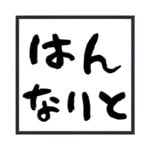
Out of the countless people who come to Japan to teach English, only a small percentage actually want to build a career in English education.
The goal is often to find a new job that pays more, matches the person’s interests, or is simply more interesting—but it’s often difficult to make the switch.
LaShawn Toyoda’s story proves that it’s possible to start a new career after teaching English. She shared with us how she made the leap into a new programming career with no prior experience in the field.
Building a Career as an English Teacher
LaShawn Toyoda’s interest in Japan began during her childhood in Maryland. Through a friend’s imported DVD collection and videos painstakingly downloaded over a dial-up connection, she discovered anime and Japanese media. She studied Japanese in college and began dreaming of living in Japan one day.
After graduating from university, LaShawn was convinced by a couple of friends to try teaching English in China. After only two weeks, she quickly realized it wasn’t the place for her and began applying for teaching jobs in Japan. This was just after the Great Tohoku Earthquake, and Japan was experiencing a mass exodus of teachers. “The first job was scary,” she recalled. “Because I had no experience teaching, and there weren’t any mentors that I could watch and learn from.”
LaShawn learned the ropes over that year while teaching hundreds of elementary and middle-school kids as an ELT. It was hard work, but rewarding.
After a year in Tochigi, she found a new position in Yokohama at an eikaiwa conversation school. It was a much faster pace than teaching at public schools, and she taught there for 7 years until she met her now-husband.
The couple moved to Tokyo. The commute from her new home proved to be much longer than she anticipated, so LaShawn decided to apply for a teaching position at a local university. She found a teaching job at Teikyo University and began working in January 2019. She imagined that she’d work there for at least a few years, but life had other plans.
Jobless in a Pandemic
“After my job interview, I received an acceptance email the same day and was excited to start working. I had about a month between when my eikaiwa job ended and my university job would begin. It was during that period that I found out I was pregnant! LaShawn recalled the daunting task of telling her new employer she would be taking maternity leave in just a few months.
Luckily, the university was supportive and provided accommodations at her new job while she prepared for maternity leave in August of the same year. In September, she had her daughter and planned to return to her job for the Spring semester in March 2020.
But again, life had other plans.
As the whole world began to shut down amidst the spread of COVID-19, LaShawn’s maternity leave was coming to an end. And the university wanted her to come back to the school to teach in person.
“It was really scary,” she said. “I had a young baby, and I was expected to teach over 100 students face to face.” At the time, no one knew how the disease spread, how to prevent it, or how it affected children.
Teaching in person was out of the question. Suddenly LaShawn found herself jobless, at home with a small baby, and in the middle of a lockdown.
Help came in the form of a message from a friend. Yan Fan, the owner of coding bootcamp Code Chrysalis, sent her a message asking if she could do anything to help. The two had met at coding-related Meetups before the pandemic.
“Hey,” LaShawn wrote back, “Do you think there’s any way I could learn how to code?”
A New Beginning
Yan shared a link to Codecademy, which offers free coding lessons on its website. When LaShawn finished the free lessons, Yan invited her to join Code Chrysalis’ new Foundation-Lite course, which covered the basics of programming in 5 weeks. LaShawn finished those lessons, too.
After proving how committed she was to learning to code, LaShawn was accepted into the application-only Intensive course. Lessons were packed into full 9-to-6 days over 11 weeks, and not only taught everything she needed to know to become a professional coder but also included applications created in teams that could be demoed by potential employers.
LaShawn graduated from the bootcamp in January 2021. She had learned full-stack engineering, including HTML and CSS, Javascript frameworks like Vue.js and React, databases, SQL, REST APIs, and more.
“I had a good enough grasp that I could definitely make things. I felt like it was a good-enough level that companies would want to hire me.”
Now that she had the skills, all that was left was to find a new job to use them.
Finding a Coding Job
It wasn’t easy to find a job, even with all the knowledge she’d accumulated.
“I forgot how many job applications filled out—I lost count after about 150.”
But she kept at it. “I was determined to keep filling out at least 20 applications per day. Statistically, I knew, as long as I kept filling them out, it would only be a matter of time before I’d get a yes.”
Finally, in April 2021, she landed a remote position working with a global industrial machine learning company. “It was a US-based company, but now we have an enterprise in Japan. We’re a very small team, but it’s been great. And I’ve been learning a ton.”
Now LaShawn had a new budding career, a better-paying job, and the freedom to work from home.
But that wasn’t the only thing her coding skills made possible.
Starting a New Service in Japan
While LaShawn was still looking for a job, the pandemic was entering a new stage: vaccines were beginning to roll out across the globe.
In the US, everyone had access to the shot. But in Japan, they were only available to medical professionals and the elderly.
“People were just very scared,” she recalled. “They were tired of being on lockdown. They were worried about getting sick… America was getting and even throwing away vaccines, but we weren’t getting any.”
“Some people were flying back to America just to get the shot and returning to Japan. But that wasn’t an affordable option for everyone.”
But there was another way. A few people had posted on Twitter about leftover vaccines in clinics due to people canceling their appointments or not showing up at all. Some of these clinics had “cancellation waiting lists” that could be joined.
Seeing these posts, LaShawn had an idea. “What about creating a database so you can keep track of which clinics are offering that option?”
She moved fast. “So on a Sunday, I sat down—I think it took about five hours. And basically, I used what I learned in the coding boot camp.”
“I threw together a really simple web application using Vue.js and Firebase. I started out with the handful of clinics that we knew about from Twitter.” She named it FindADoc.
That night, she posted her new creation to Twitter and went to bed. She woke up to a flood of retweets and a disabled database because it had exceeded her free quota from all the people trying to access it.
FindADoc Catches On
Suddenly, FindADoc became a full-time project.
People were adding information left and right. Engineers from Mercari, Google, Indeed, and other major companies were volunteering their time to improve the code. Others were sending money to support the cause.
LaShawn found herself working day and night. “I quickly went from a bootcamp graduate to a software engineering manager,” she laughed. “It was mind-blowing.”
FindADoc grew to over 100 clinics and localized in 27 different languages during its run and helped foreigners in Japan get access to vaccines before they were widely available.
Eventually, vaccines became readily available, and the site wasn’t needed anymore. But LaShawn and her team are now working on FindADoc 2.0 with a new mission: helping non-Japanese find doctors that speak their native language. She plans to release it sometime in the next year.
Making a Difference for Others
LaShawn’s story is one of resilience, of seizing opportunities as they appear and making the most of them.
And she hopes to be able to provide opportunities to others, too, by one day offering scholarships for women who want to become software engineers, so they can improve their quality of life.
“Most Japanese single mothers and their children live below the poverty line, and there aren’t many resources available to help them to switch to careers that offer a high enough salary to be self-sufficient,” she says. “I would like to help bridge that gap.”
Author: Amanda Horiuchi



















